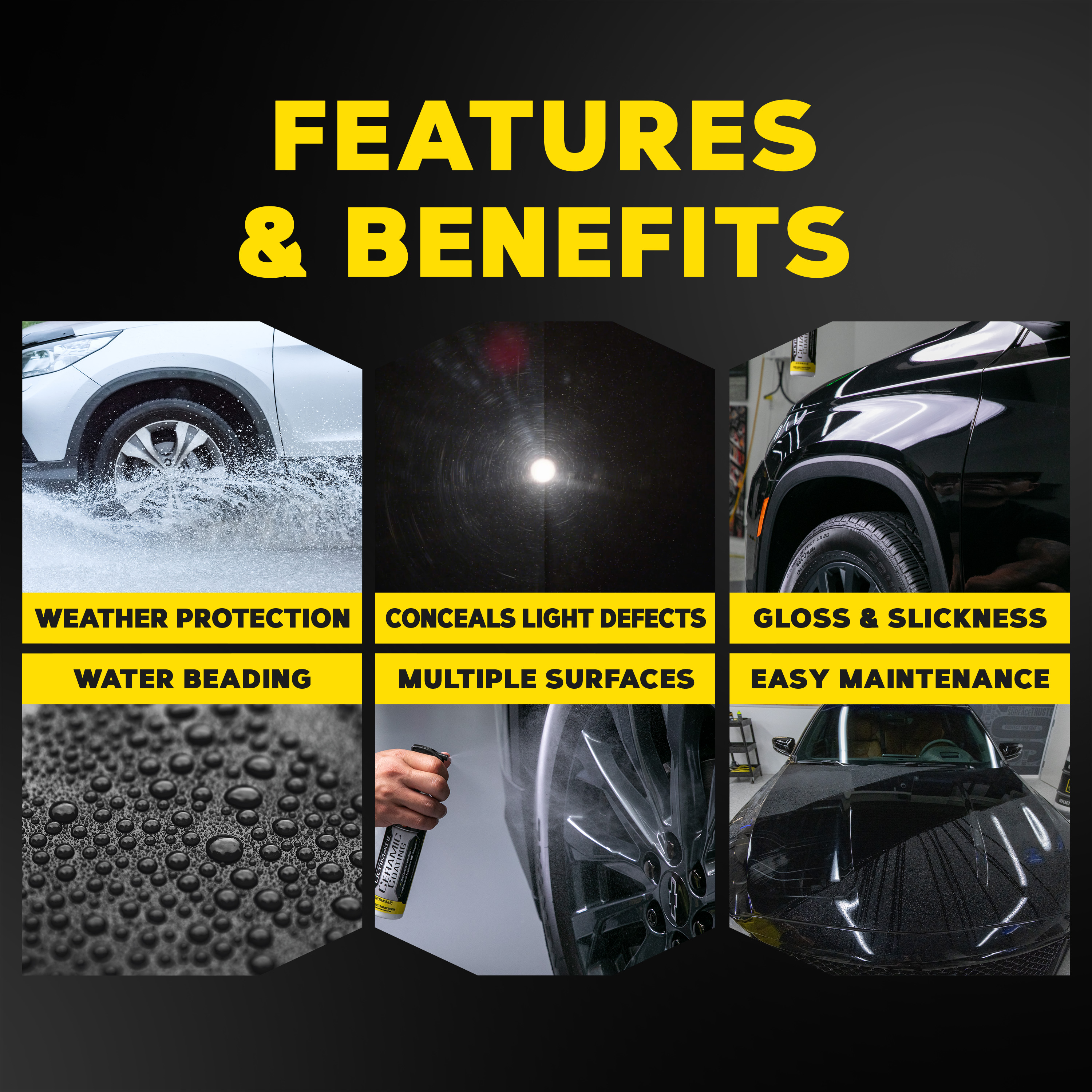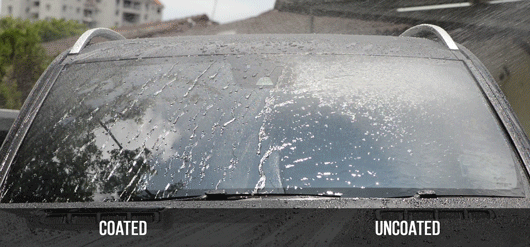Just How Ceramic Coating Philadelphia Keeps Your Automobile Looking New for Years
Just How Ceramic Coating Philadelphia Keeps Your Automobile Looking New for Years
Blog Article
Why Ceramic Finish Is the Ultimate Service for a Remarkable Complete
Ceramic covering has become a leading remedy for those seeking a remarkable coating for their vehicles, thanks to its amazing longevity and safety features. This sophisticated liquid polymer not only bonds effortlessly with manufacturing facility paint however additionally supplies an awesome obstacle against typical dangers such as scratches, UV rays, and toxic wastes. In addition, its hydrophobic buildings streamline upkeep while improving visual charm. Nevertheless, understanding exactly how this innovation contrasts to standard methods and discovering its application subtleties can disclose also a lot more concerning its worth. What variables really established ceramic finish apart?
What Is Ceramic Finishing?

When applied correctly, ceramic coating creates a hydrophobic surface that wards off water and dust, making it less complicated to maintain and clean up. Unlike traditional waxes or sealants, which typically use temporary defense, ceramic finishings can last for several years, relying on the product top quality and application technique. The process of applying ceramic coating calls for meticulous preparation, including comprehensive cleaning and in some cases paint adjustment, to guarantee optimal bonding and efficiency.
Ceramic layers are not limited to vehicle surface areas; they can likewise be used on different materials, consisting of glass, steel, and plastics, providing a versatile service for enhancing defense. In general, ceramic finish represents a substantial advancement in surface defense technology, combining both useful and visual benefits for a variety of applications.
Advantages of Ceramic Finishing
While lots of surface area defense alternatives exist, the advantages of ceramic finishing stick out because of its one-of-a-kind homes and durable performance. One of the key advantages is its phenomenal longevity. Ceramic Coating Philadelphia. Unlike standard wax or sealants that require constant reapplication, ceramic finishings offer a resistant layer that can last for several years, dramatically lowering maintenance efforts
One more noteworthy benefit is improved protection against ecological contaminants. Ceramic layers create a hydrophobic surface area that drives away water, dirt, and various toxins, making it simpler to cleanse. This feature not just maintains the vehicle's appearance but additionally lessens the threat of deterioration and oxidation, especially in extreme weather.
Moreover, ceramic finishes provide superior resistance to UV rays, preventing fading and degradation of paint with time. This UV security is important for maintaining the visual worth of surface areas and automobiles exposed to guide sunlight.
Additionally, the glossy surface achieved with ceramic finishing enhances the overall aesthetic appeal, providing surfaces a showroom-quality shine. In general, ceramic coatings represent a considerable improvement in surface area protection technology, supplying enduring benefits that provide to both useful and aesthetic needs.
Exactly How It Works
Comprehending the science behind ceramic coverings discloses how they supply such remarkable protection and long life. At its core, a ceramic coating is a fluid polymer that chemically bonds with the vehicle's factory paint. This bonding creates a safety layer that is both oleophobic and hydrophobic, repelling water, dirt, and oil. The key element of a lot of ceramic finishings is silicon dioxide (SiO2), which is obtained from quartz. This compound adds to the layer's hardness and resistance to scrapes, UV rays, and environmental impurities.
The application procedure includes multiple steps, consisting of surface prep work, which is vital to attaining ideal attachment. As soon as used, the layer undertakes a healing procedure, during which it solidifies and forms a semi-permanent bond with the paint surface. This bond is what identifies ceramic finishes from traditional waxes and sealants, providing a longer-lasting safety barrier that can endure for years.
Furthermore, the thickness of the finish can enhance its safety qualities, guaranteeing that it can stand Source up to harsh conditions. Eventually, the science of ceramic finishes combines innovative products with ingenious application methods to provide an unrivaled level of protection and visual enhancement for cars.
Contrast With Conventional Techniques
The benefits of ceramic coatings end up being particularly obvious when compared to typical paint defense techniques such as sealants and waxes. While waxes offer a short-lived shine, typically lasting a couple of weeks to a number of months, ceramic finishes supply a durable safety layer that can withstand for numerous years. This toughness considerably lowers the regularity of reapplication, making ceramic layers a much more economical solution gradually.
Additionally, conventional methods usually require substantial preparation and numerous applications to attain a satisfactory degree of security. On the other hand, ceramic coatings bond at a molecular level with the lorry's surface area, producing a durable shield against ecological contaminants like UV rays, acid rain, and roadway salts. This bond enhances the lorry's resistance to scratches and swirl marks, which prevail with typical waxes and sealers.
Furthermore, the hydrophobic properties of ceramic coverings ward off water and dust, resulting in easier cleaning and maintenance. In contrast, wax and sealant-treated surfaces can bring in grime, requiring even more regular cleaning - Ceramic Coating Philadelphia. Overall, ceramic layers not only supply exceptional security but also supply a more aesthetically appealing and long-lasting coating, establishing them as the recommended selection for discerning automobile proprietors
Application and Upkeep Tips

Making link use of a foam applicator, use the layer in little sections, following the manufacturer's standards pertaining to thickness and overlap. Permit sufficient curing time between layers, generally 24 hr, to make certain correct bonding. After application, it is critical to avoid exposure to water or rough components for a minimum of a week to allow the finishing to totally cure.
For maintenance, wash the car routinely with pH-balanced soaps and stay clear of abrasive products. Touchless automobile laundries are recommended to reduce damaging. In addition, using a ceramic upkeep spray can improve the coating's hydrophobic buildings and longevity. Routine inspections for any type of indicators of wear will assist keep the covering's stability and maintain that pristine coating.
Conclusion
In verdict, ceramic layer becomes a premium choice for accomplishing a flawless automotive finish. Its exceptional toughness, protective high qualities, and hydrophobic residential or commercial properties dramatically enhance the car's look while streamlining maintenance efforts. By forming a durable bond with manufacturing facility paint, ceramic finish properly guards versus scratches, UV rays, and environmental contaminants. With a lifespan expanding numerous years, this sophisticated option not just maintains but also raises the general visual allure of vehicles, making it a cost-efficient investment for cars and truck enthusiasts.

Report this page